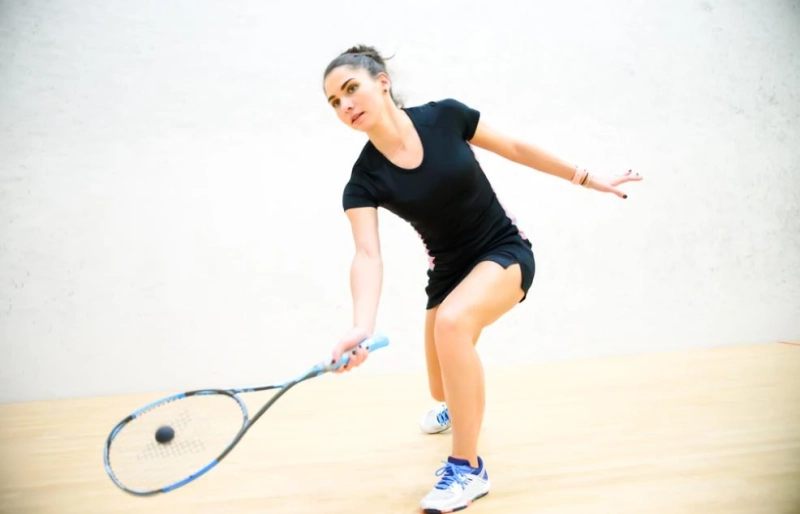Squash and racquetball, two racquet sports often played in close quarters, share a common origin but have distinct characteristics that set them apart. For enthusiasts entering the world of indoor racquet sports, understanding the differences and similarities between racquetball and squash is crucial. In this comprehensive guide, we delve into the intricacies of both sports, exploring their rules, equipment, gameplay, and unique appeals.
Squash: The Dynamic Game of Speed and Precision
1. Court Size and Layout
Squash is played on a four-walled court, with players taking turns hitting the ball against the front wall. The court is smaller than a racketball court, demanding quick reflexes and agile movements. The standard squash court measures 21 feet by 32 feet, creating an intense and fast-paced playing environment. There are different courts in cities to play squash. You can join Nicol Squash if you want to learn and play squash NYC.
2. Racquet and Ball
Squash utilizes a smaller, more streamlined racquet compared to racketball. The squash ball is also smaller and less bouncy, requiring precise shots and strategic play. The combination of a smaller court, agile movements, and a less forgiving ball makes squash a game of speed, accuracy, and finesse.
3. Scoring System
Squash follows a straightforward scoring system. A match typically consists of the best of three or five games, with each game played to 11 points. However, a player must win by a clear two-point margin. The scoring system rewards consistent performance and strategic play.
4. Gameplay and Strategy
Close-Quarters Play: The compact court size in squash necessitates players to engage in close-quarters play, making it crucial to control the "T" area at the center of the court for strategic advantage.
Variety of Shots: Squash players use a variety of shots, including drives, boasts, and drop shots, to outmaneuver opponents. The emphasis is on quick decision-making and adapting to the fast-paced nature of the game.
Racquetball: The Power Game with a Larger Court
1. Court Size and Layout
Racquetball is played on a larger court compared to squash. The standard racquetball court measures 20 feet by 40 feet, providing more space for players to move. The additional court size allows for more powerful shots and a different style of gameplay.
2. Racquet and Ball
Racketball features a larger racquet and a more bouncy ball than squash. The increased size of both the racquet and the ball contributes to a more forgiving playing experience, allowing players to rely on power shots and a less precise playing style.
3. Scoring System
The scoring system in racketball is similar to squash, with matches typically played best out of three games. Each game is played to 15 points, and a player must win by a clear two-point margin. The scoring system encourages consistent play and rewards players who can maintain control of the rally.
4. Gameplay and Strategy
Powerful Shots: Racketball is known for its emphasis on powerful shots. The larger court size allows players to use their strength to hit the ball hard, creating a more dynamic and aggressive playing style.
Extended Rallies: The larger court also contributes to more extended rallies in racketball. Players have more room to retrieve shots, leading to longer and more physically demanding points.
Similarities and Distinctive Features
1. Fitness and Endurance
Both squash and racketball demand a high level of fitness and endurance. The constant movement, quick reactions, and agility required in both sports contribute to cardiovascular fitness and overall physical conditioning.
2. Indoor Racquet Sports
Both squash and racketball are indoor sports, allowing players to enjoy the game year-round regardless of weather conditions. The enclosed court environment adds an element of intensity and focus to the gameplay.
3. Racquet Skills and Hand-Eye Coordination
Both sports enhance racquet skills and hand-eye coordination. The need to make split-second decisions, react to the ball's trajectory, and execute precise shots contributes to the development of these fundamental skills in players of both squash and racketball.
4. Social and Competitive Aspects
Both sports offer opportunities for socializing and competition. Squash and racketball clubs often organize leagues, tournaments, and social events, creating a vibrant community for players to connect and engage in friendly competition.
Choosing Between Squash and Racketball: Personal Preferences Matter
Ultimately, the choice between squash and racketball boils down to personal preferences and playing style. Squash appeals to those who enjoy a fast-paced, precision-oriented game in close quarters, while racketball caters to players who favor a more powerful and dynamic style with the luxury of a larger court.
Whether you're drawn to the finesse of squash or the power game of racketball, both sports offer unique challenges and rewards. Exploring both can provide a well-rounded racquet sports experience, allowing players to discover which suits their preferences and playing strengths best.
Conclusion
Squash and racketball, born from a common lineage, have evolved into distinct sports with their own set of rules, court sizes, and playing styles. While squash emphasizes speed, precision, and close-quarters play on a smaller court, racketball offers a more dynamic, powerful experience on a larger court. Both sports contribute to overall fitness, hand-eye coordination, and a sense of community among players. Whether you choose the finesse of squash or the power game of racketball, the world of indoor racquet sports welcomes enthusiasts to explore diverse paths and find the game that resonates with their passion and playing style.


